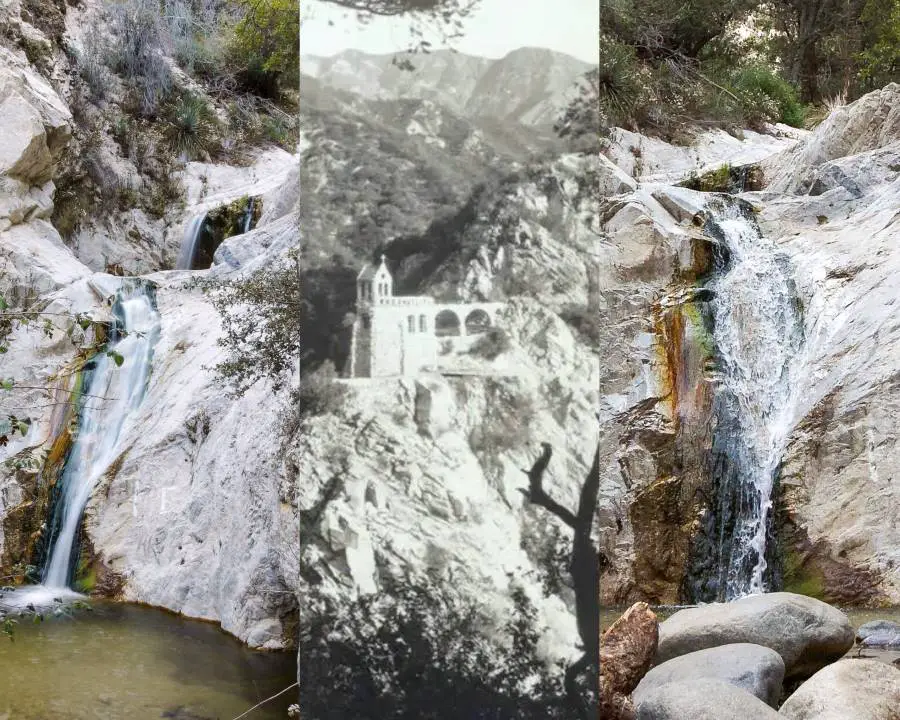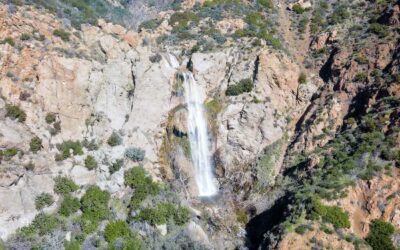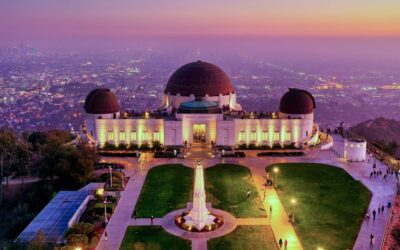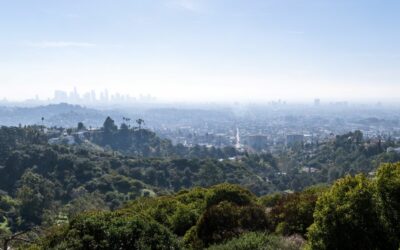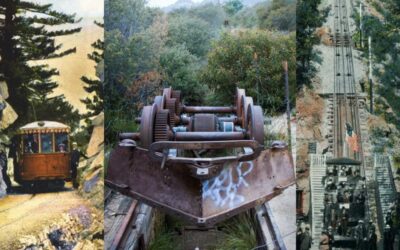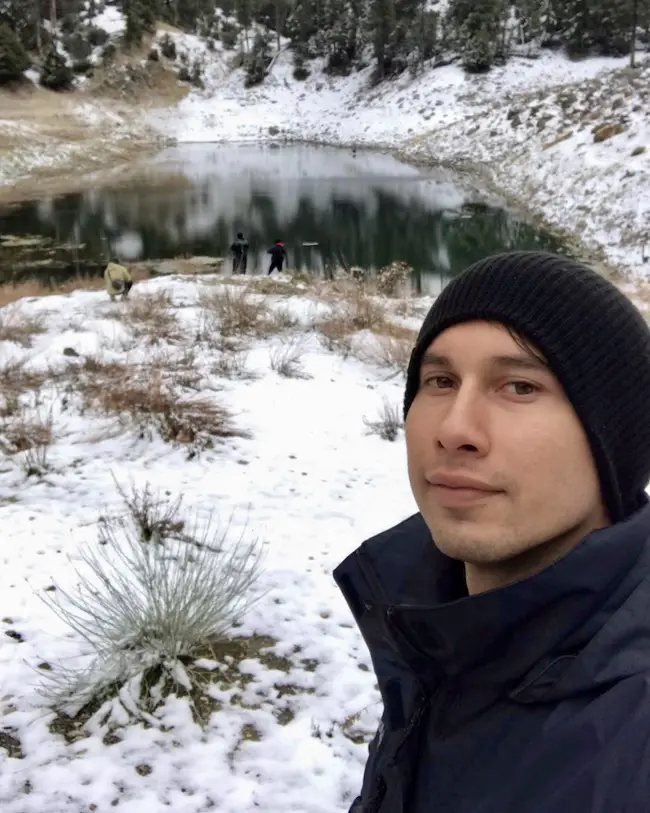The following info doesn’t include the ruins detour nor the extra trek up to the hidden falls.
- Total Miles: 3.6
- Time: 2 hrs
- Difficulty: Moderate
- Best Season: Spring (2023 is an exception. It’s flowing as of Dec 2023)
- Elevation Gain: 691 ft
- Max Elevation: 3247 ft
- Type of Trail: Out & Back
- Parking Lot: Fits ≈ 30 cars
- Dogs: Allowed On A Leash
- Restrooms: Available On The Trailhead
- Trail Popularity: Very High
- Pics Taken On: Dec 7, 2023
Looking for a trail that offers it all?
The scenic Switzer Falls, which begins via the Gabrielino Trail in the Angeles National Forest, features a two-tier cascade, and is one of my favorite hikes as it offers various fascinating features. For adventurers, chapel ruins can be explored by taking a short but somewhat challenging detour that begins about halfway to Switzer Falls, and a forgotten/secret waterfall can be explored further upstream from the primary falls.
A swing is located near the end of the hike, but wait there’s more. The view of the Arroyo Seco zig-zagging its way down Bear canyon and the surrounding peaks is spectacular to say the least. Trust me, this hike will not disappoint.
Want to explore the best waterfalls in the county of LA? Check out the post below to view huge, snowy, and scenic waterfalls.
Best Waterfalls In Los Angeles
Switzer Falls Trail Map
powered by Advanced iFrame. Get the Pro version on CodeCanyon.
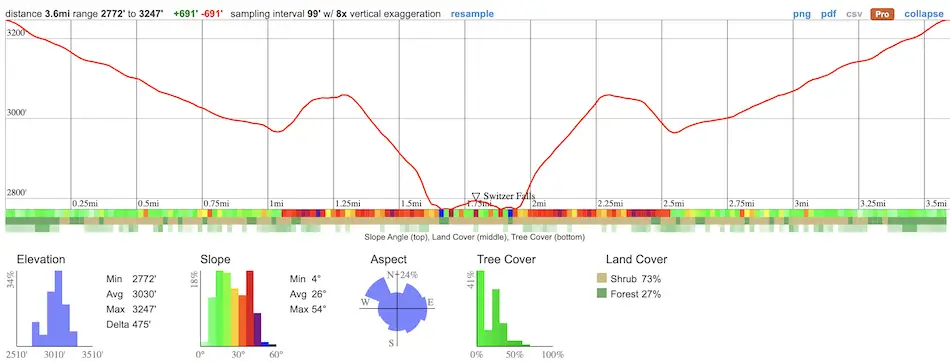
The chapel ruins add a total of 0.2 miles, and the forgotten waterfall adds 0.41 miles. Hiking to Switzer Falls, the chapel ruins, and the forgotten falls totals the hike at 4.2 miles. All three can be found in the map above.
Parking & Directions
There are 2 available parking lots. The first is at the top, right off the 2 Hwy, and the second is at the bottom of the Switzer Truck Trail. If you park at the top expect to add another steep mile or so to the hike (roundtrip).
Click the link to be redirected to Switzer Falls Picnic Area (trailhead) via Google Maps.
Helpful Links
Switzer Falls Weather Forecast
SoCal Adventure Pass (Required For Parking)
Hiking Switzer Falls
The hike begins in the densely vegetated Bear Canyon, and, since the majority of the trail ran adjacent to the Arroyo Seco creek, plenty of shade was provided by white alders, sycamores, and oak trees.
The actual name of the trail is the Gabrielino Trail, named after the Tongva peoples who were native to the region. They were called Gabrielinos by the Spanish after the mission of San Gabriel in Los Angeles, but I digress.
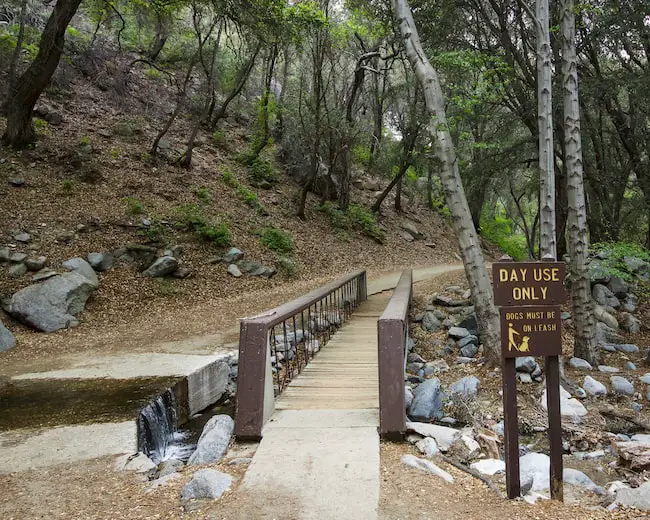
The canyon is home to an abundance of wildlife. I’ve seen everything from deer, quail, and a California King Snake (shown below).
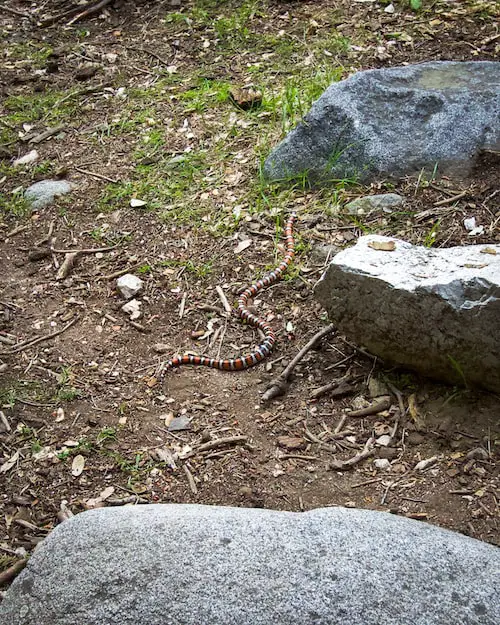
Getting to the falls requires crossing the creek quite a few times. If your balance is not the best, consider using trekking poles.
I use the Trailbuddy poles, which I highly recommend. They’re super cheap and reliable.
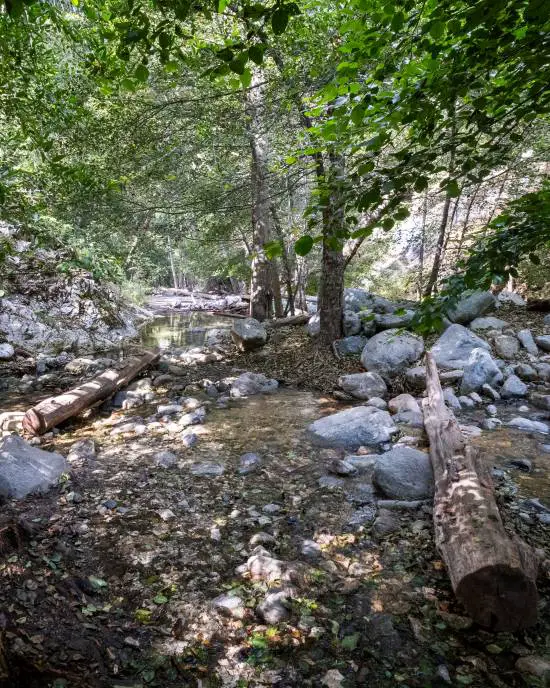
Due to the many oak trees, shallow banks along the creek, and access to the valley via the creek, I always suspected Bear Canyon to have been a seasonal home for Native Americans.
Someone built a table and chair out of logs near the fork where the chapel detour begins, and I must admit, they did a phenomenal job. My hat goes off to you sir or madam.
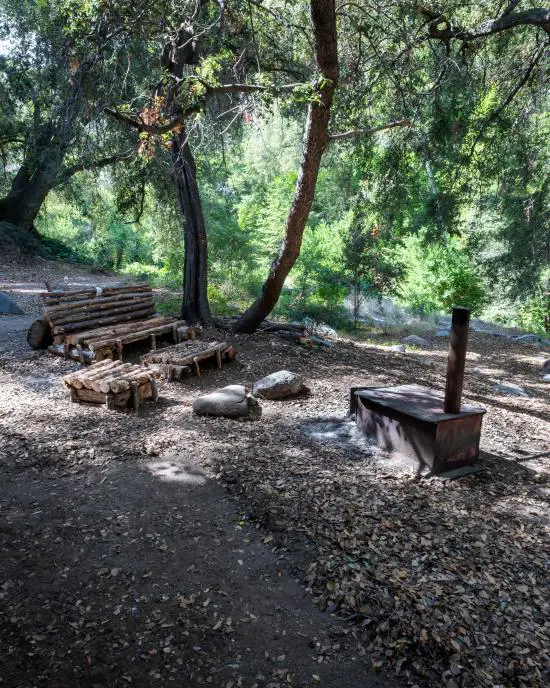
Keep in mind that if you decide to take the chapel detour you WILL be pricked by razor-sharp yuccas, as the trail is completely overgrown in some sections.
Also, make a mental note of the image below. You’ll be returning to this fork after the ruins to hop back on the Gabrielino Trail toward Switzer Falls.
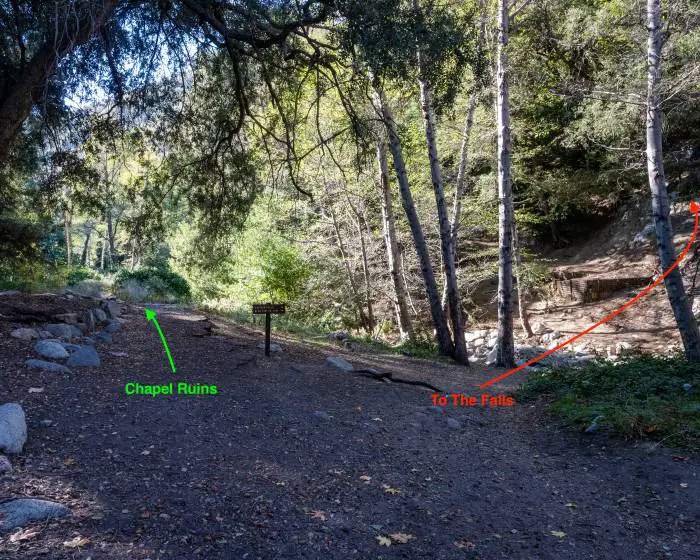
Christ (Switzer Land) Chapel Ruins Detour
After making a left at the fork to begin the detour, I made another left at the stone wall (image below). The trail, if you can call it that, was rather steep and loose, and almost immediately curved to the right.
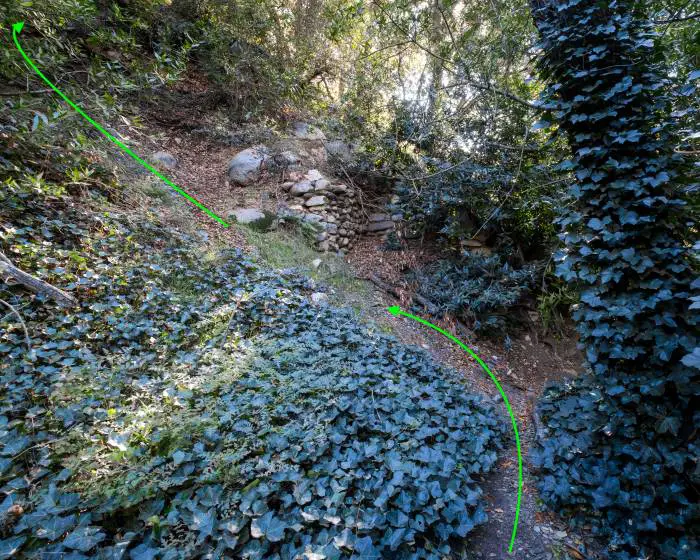
I took the path to the left at the next fork.
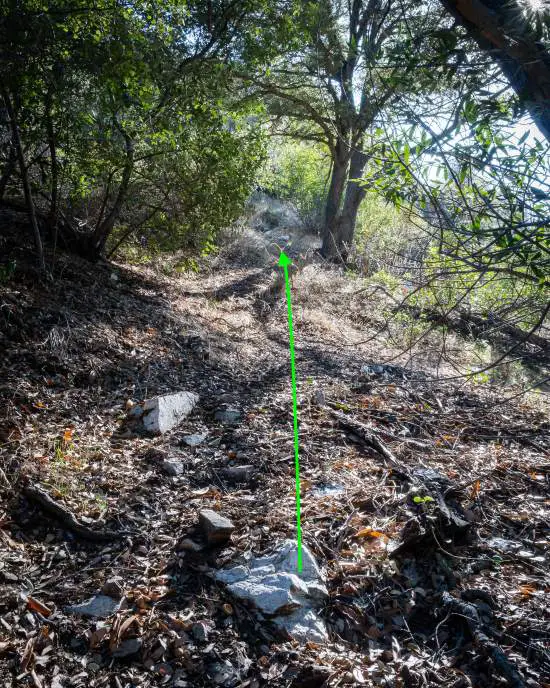
From this point on the trail got VERY overgrown and remained that way until I arrived at the ruins, which was only after a 30-foot stretch or so.
For the last fork shown below, I made a right.
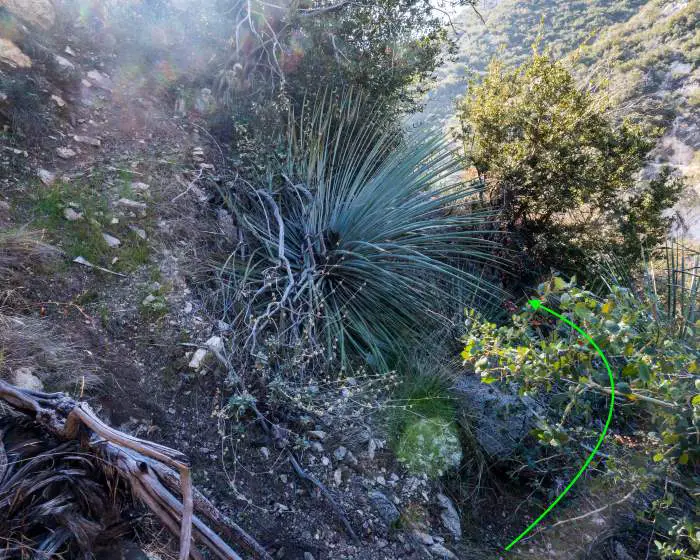
The view at the ruins was beyond stunning and more than worth getting poked by yuccas. The image below shows the building’s foundation and what appear to be concrete steps, but may also have been part of the foundation.
Christ Chapel was built in 1924, had an amphitheater that seated 200 people, and offered an insane, jaw-dropping view of the mountains. I don’t think I’d be able to pay attention during service with a view like that!
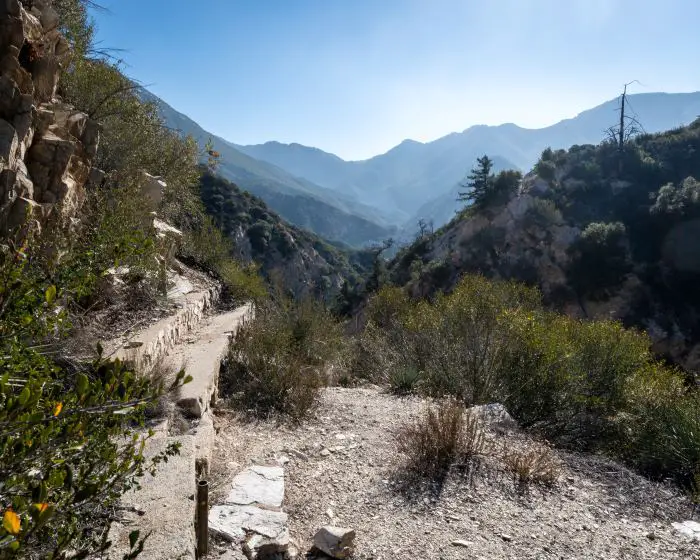
Take a mental note of the chapel’s arches because I’ll be coming back to them shortly.
Want to explore a 40-foot waterfall with a rock slide and pool? Check out Stoddard Falls in San Antonio Canyon.
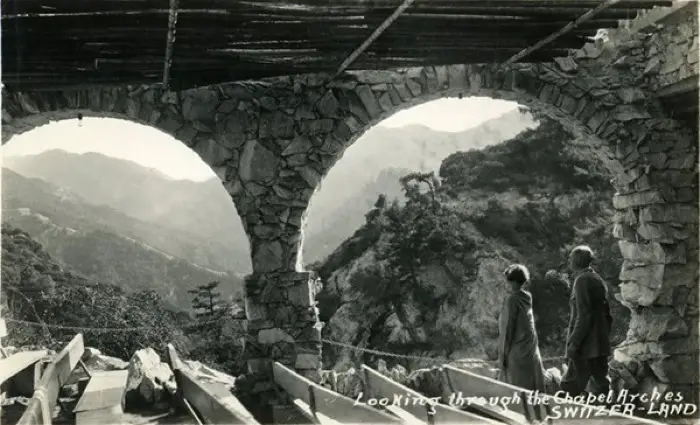
Photo: Switzer Land Owners Lloyd & Bertha Austin | Source: Photobucket/cougarmagic
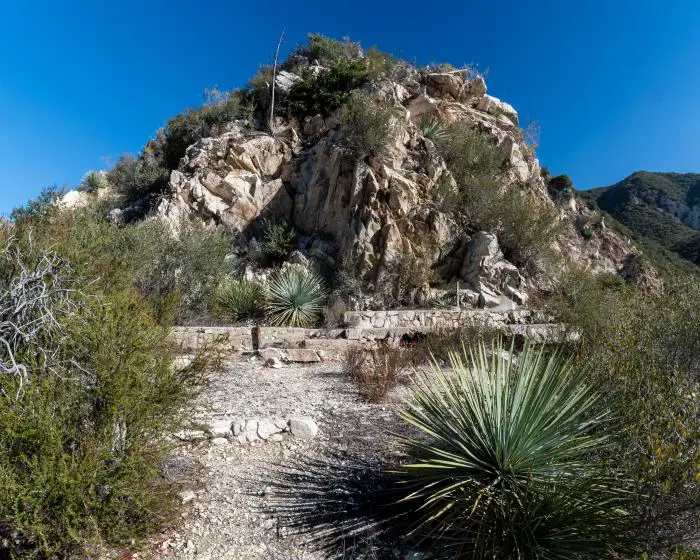
That marks the end of the ruins detour.
I returned to the Gabrielino Trail the same way, crossed the creek at the fork, and began ascending the opposite side of the canyon.
Back On The Gabrielino Trail To Switzer Falls
Not long after I had begun ascending, I heard the sound of roaring water that was much too loud to be the creek.
I looked down and saw the brink of the forgotten falls flowing through a very narrow section of the canyon that was once known as the Gorge Brink in the resort days. The trail to the top of the hidden falls is no longer open to the public.
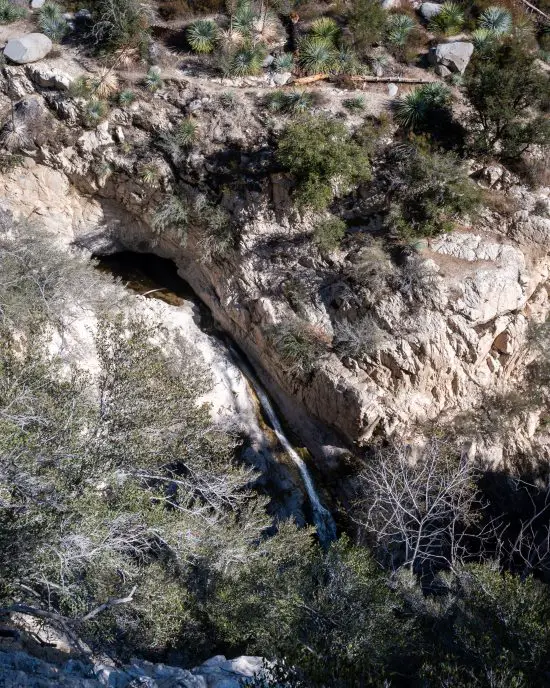
Since Bear Canyon was a paradise mountain resort, it’s common to see vintage pictures depicting structures that no longer exist, such as those in the photograph of the Gorge Brink below.
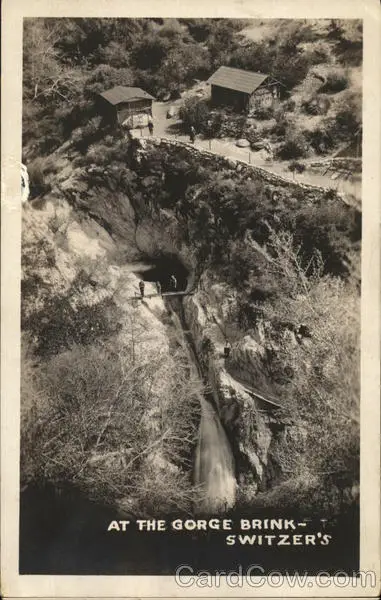
I marched on but didn’t get too far as something on the opposite side of the canyon caught my eye.
Remember the arches I pointed out earlier? They’re still on the mountain!
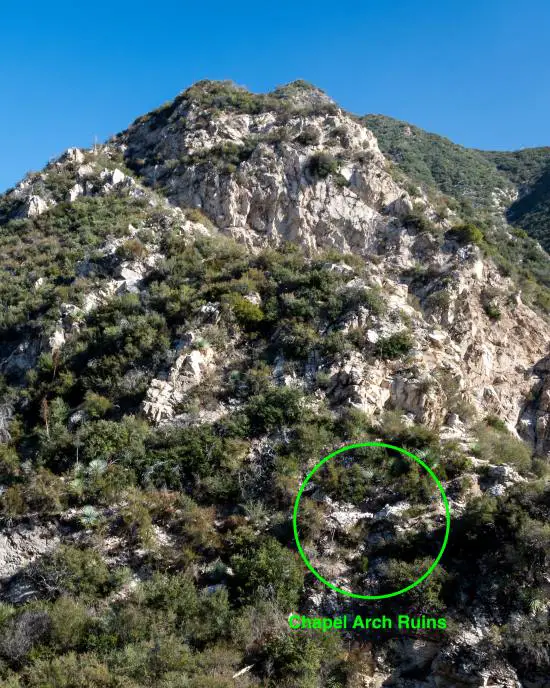
Here’s an image showing the entire Switzer Land Chapel.
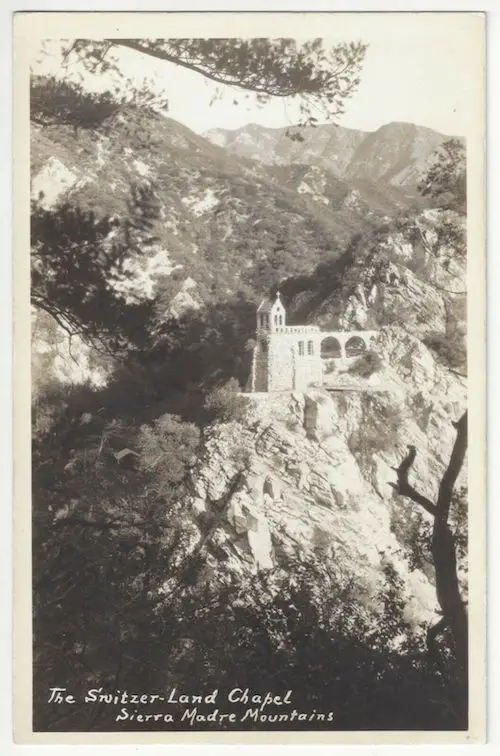
The view from this section of the trail is one of my three favorite views in Southern California. Yeah, it’s that good.
Notice how the Arroyo Seco zig-zags its way down Bear Canyon.
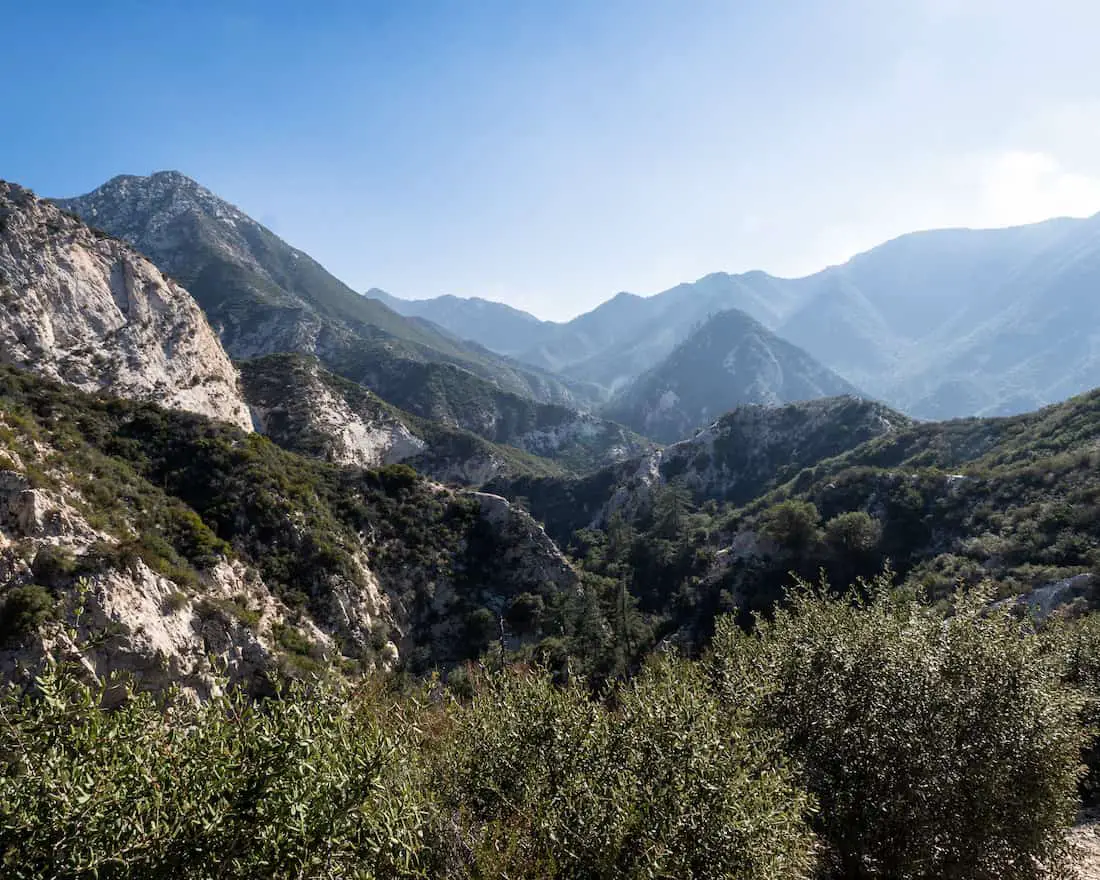
I turned left at the fork to switch from the Gabrielino Trail to the Bear Canyon Trail and begin my descent back to the Arroyo Seco.
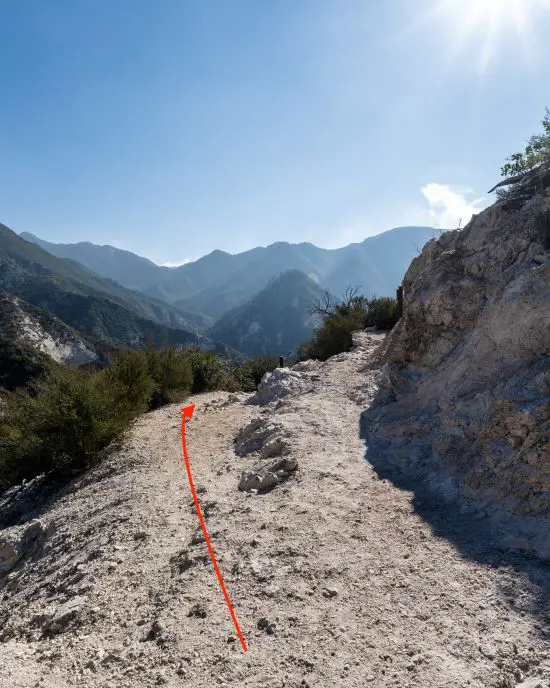
Back inside the canyon, I headed upstream to the falls via the Lower Switzer Falls Trail. A wooden swing was located a few minutes before I arrived at the falls. Thank you to whoever took the time to set it up.
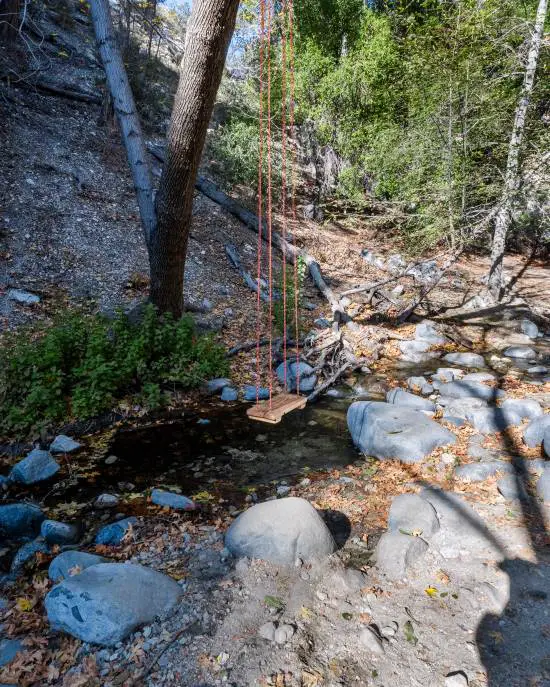
There it is! The beautiful Switzer Falls, a breathtaking two-tier monolith roaring over the granite rock.
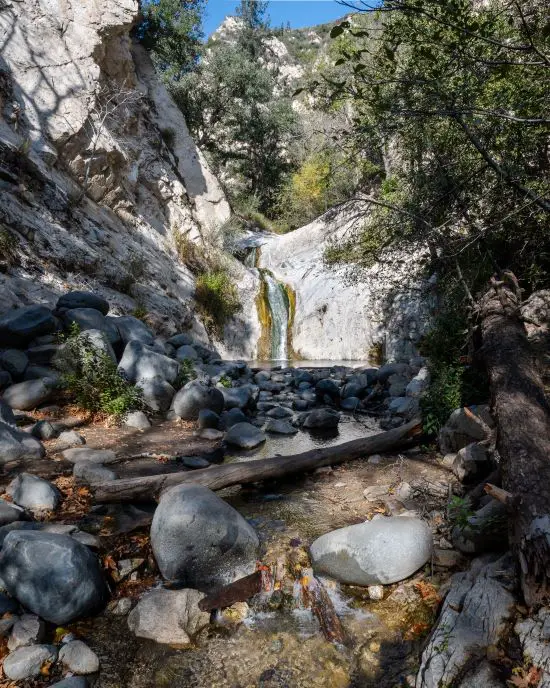
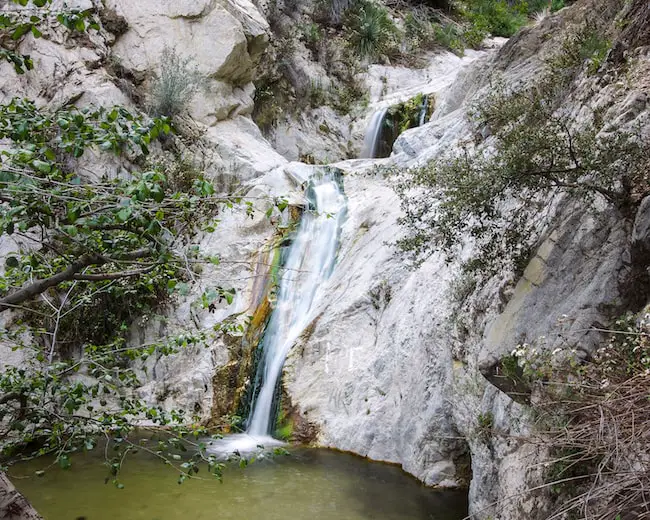
The pool can get up to four feet deep in the spring.
Swtizer Falls is stunning, but it’s far from the most breathtaking falls in the San Gabriels. Check out this much more impressive, and enormous waterfall in San Antonio Canyon. Did I mention it gets snow in the winter?!
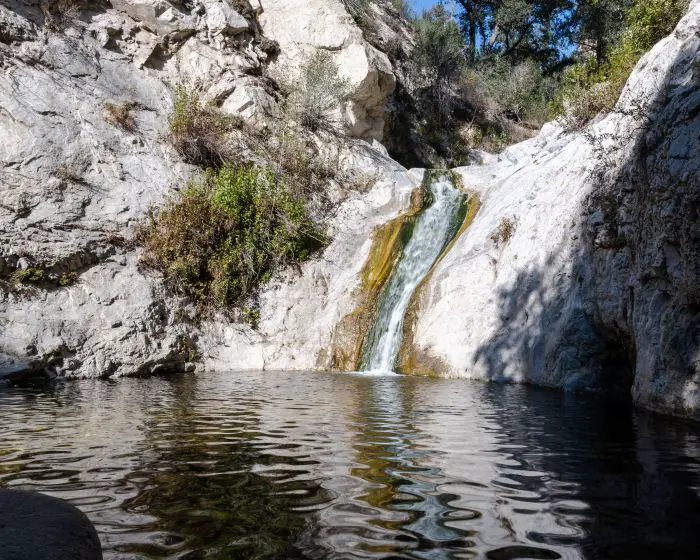
Here is a shot of Switzer Falls’ top tier.
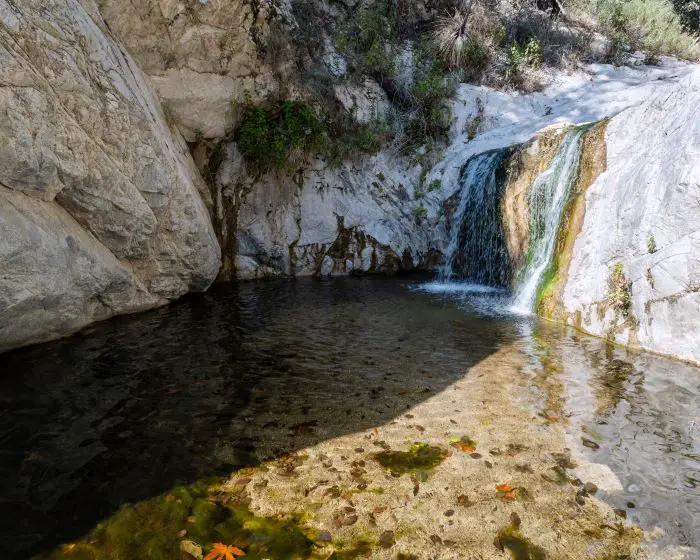
Switzer Falls is sometimes referred to as Lower Switzer Falls, and if there’s a lower waterfall you best believe there’s an upper. Let’s begin the trek to the forgotten falls!
Switzerland Falls AKA Silver Spray Falls (Forgotten Falls)
The forgotten falls has been referred to as Upper Switzer Falls, Switzerland Falls, and Silver Spray Falls. I like Silver Spray Falls so I’ll be using that name for the rest of the post.
I made my way over Lower Switzer Falls by climbing up the east side of the canyon. The trail leading over the falls is steep, slippery, and requires a bit of climbing. Don’t attempt it if you don’t feel comfortable.
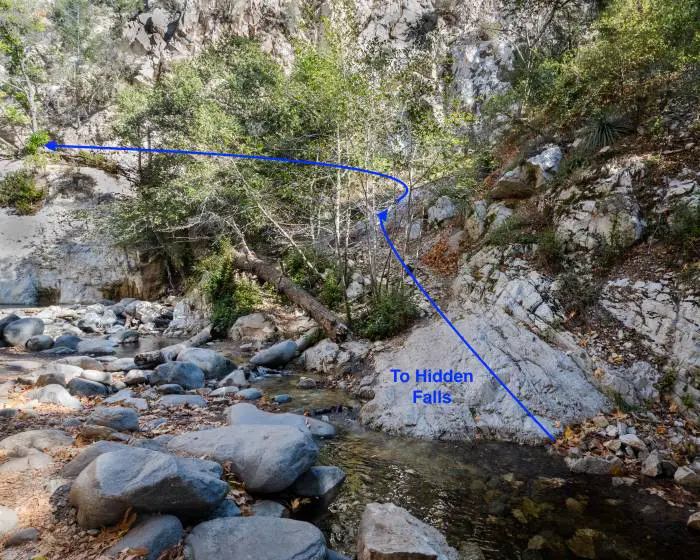
After climbing up the side of the canyon, I took a shot while standing on top of the bottom tier, and noticed I had the whole place to myself. Nothing beats the great outdoors.
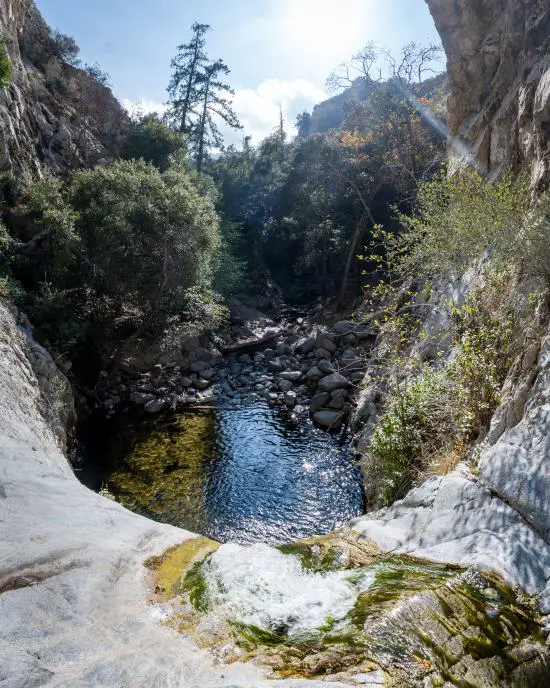
Like with the chapel detour, the trail is virtually nonexistent, but luckily, it was no where near as overgrown, and definitely no yuccas.
After 0.2 miles from the lower falls I arrived at Silver Spray Falls. It was much larger than its lower counterpart, measuring about 50 feet in height.
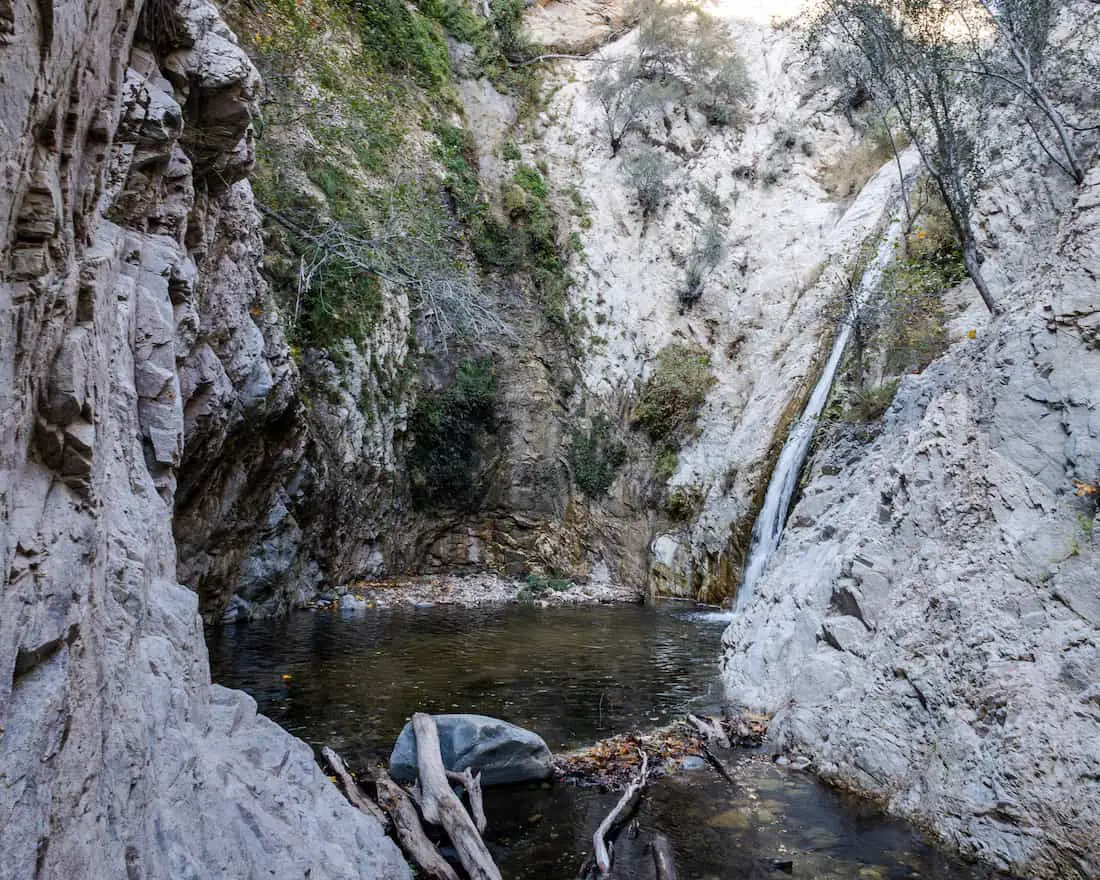
Silver Spray Falls was not a secret when Switzer’s Camp was still open. How do I know this? Well, I managed to find multiple vintage pictures of the falls, one of which I immediately purchased for my collection.
I’m guessing the waterfall was completely forgotten when the camp closed down in the first half of the 20th century, a common occurrence among camps and waterfalls after the creation of mountain highways and automobiles.
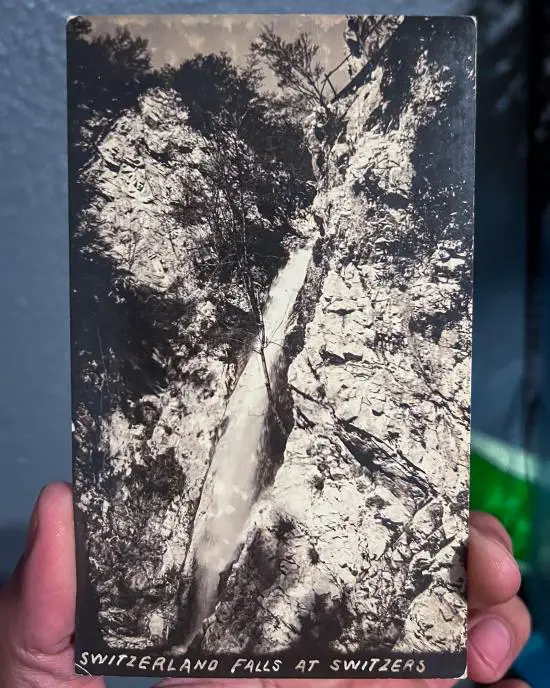
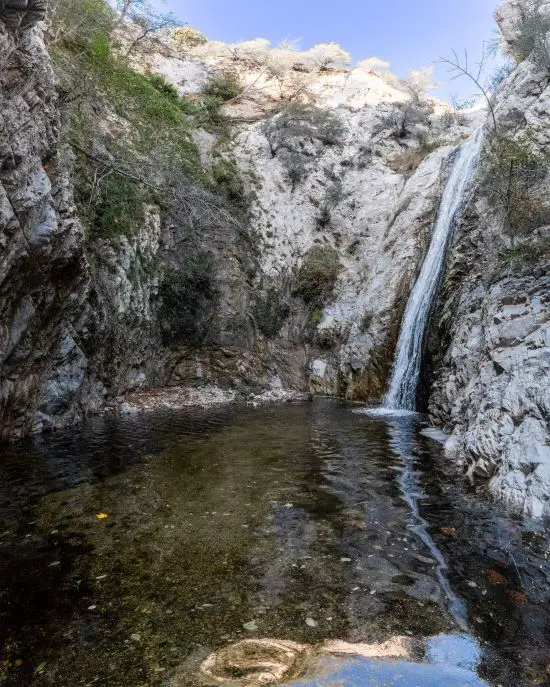
The adventure doesn’t have to end here. Explore a very easy and extremely scenic 50 foot waterfall in Soldier Creek in the North Fork of the San Gabriel Canyon that flows year-round.
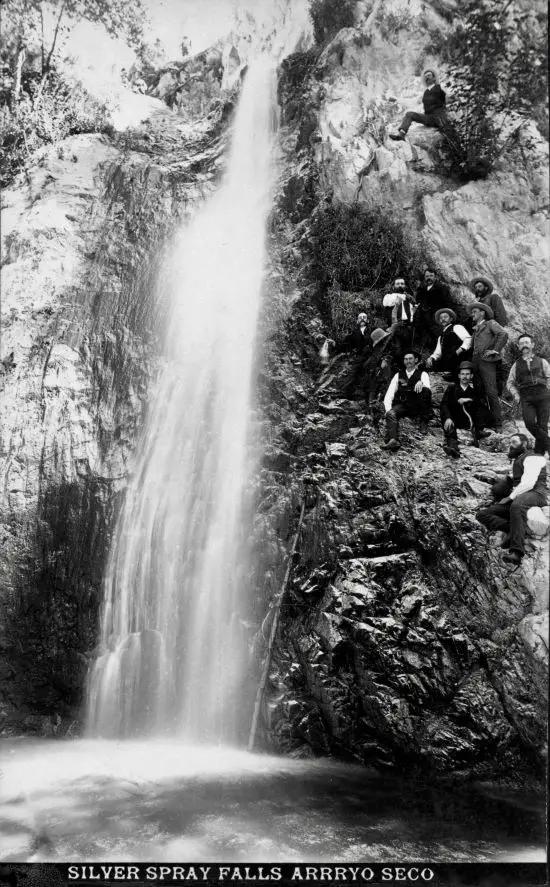
Photo: Pasadena Museum of History | SouthPasadena.com News
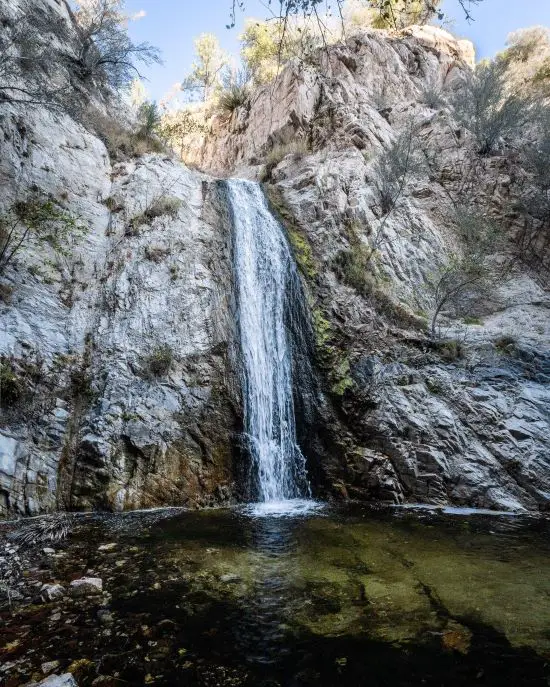
Just as impressive was the size of its pool, which filled the majority of the corner of the canyon.
I had to walk across the knee-deep pool to grab this next shot. The water was so cold that my legs began to sting. Nothing new, or so I thought.
After roughly 10 minutes in the pool, I began experiencing a new level of stinging in my toes that I’d never felt before. Although they were throbbing, I couldn’t feel my toes making contact with my boots. I lost all feeling of touch except intense pain.
It was epic and worth the picture. Here you go.
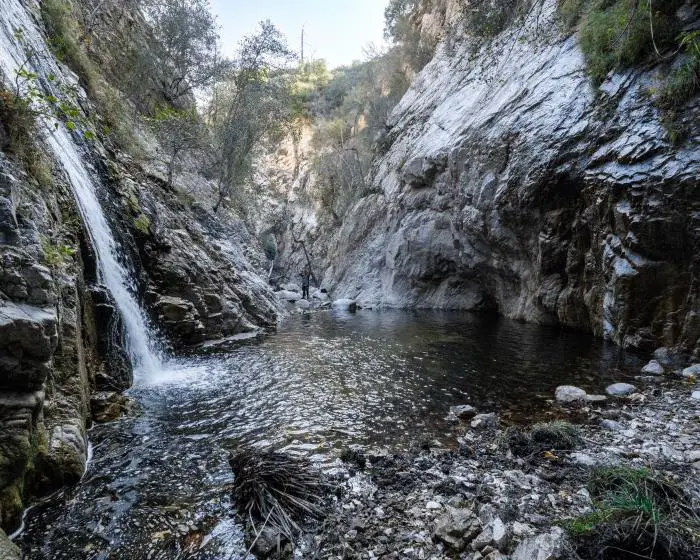
History Of Switzer’s Camp (AKA Switzer Land)
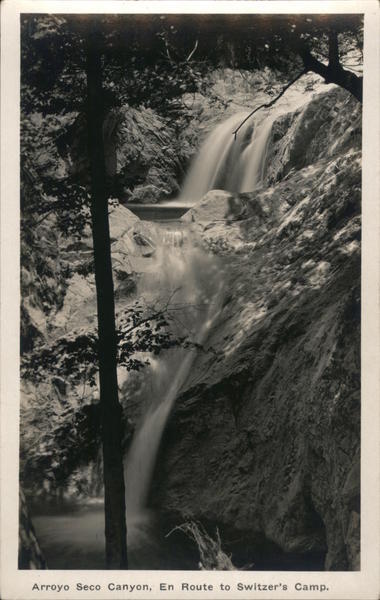
According to Joh Robinson in his book, The San Gabriels, Switzer Falls’ recorded history begins in 1884 with a man named Commodore Perry Switzer shown below.
Switzer was an adventurous man who was fed up with his dull carpenter life. After his expert mountain climber friend, Robert K Waterman pointed out the spot, Switzer was committed to opening a resort.
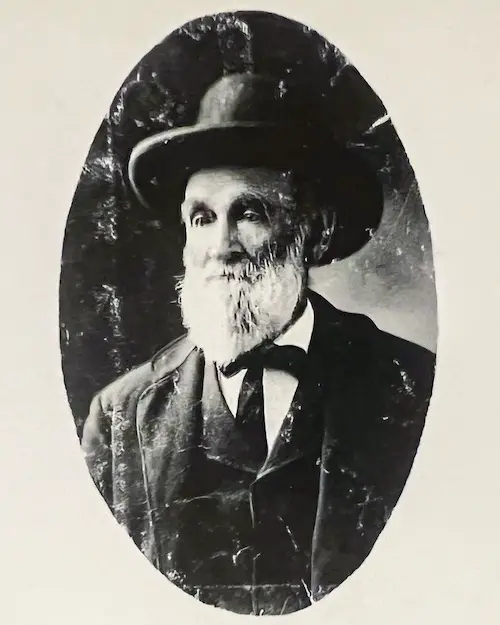
With a help of his wealthy friend, Harvey Walker, he opened a hostelry in the San Gabriel Mountains right alongside the Arroyo Seco. He charged $1.50 per day for room and board and called it Switzer’s Camp.
According to author Robert H. Peterson in his book, “Altadena’s Golden Years,” Switzer completed the first trail to the resort in 1884 with the help of Bob Waterman, John Simmons, and Henry Thompson, and was about 8 miles long.
The trail began near the mouth of Millard Canyon and meandered up the Arroyo Seco before descending 3000 feet to the camp’s elevation. The trail was later changed to avoid the strenuous climb.
Visitors could access the camp by either hiking, horseback, or taking a 5 hour trip via Switzer’s “mountain canaries” (his burros), which would pick up guests at the mouth of the canyon twice a week.
Switzer’s was a success from the start, with people from the valley flocking in droves to the perfect little getaway. In 1887, the legendary John Muir himself visited the camp and spoke highly of it.
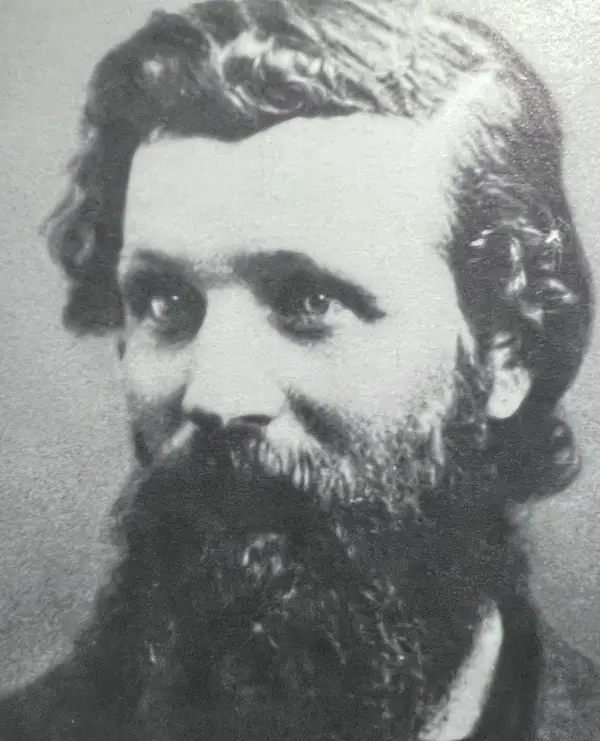
One of the many fun activities visitors enjoyed was hiking to nearby attractions, such as Mt Disappointment, Strawberry Peak, or, you guessed it, Switzer Falls, but hunting, fishing, and horseback riding was also popular.
The stream and pools below the waterfalls were stocked with trout.
In 1896 a fire wiped out everything in the camp with the exception of one cabin. In 1905, Clarence S. Martin, who previously owned a camp resort on Mt Wilson that bore his name, and Brainerd bought and rebuilt the resort. Martin ran Switzer’s Camp until the time of his death in 1911.
Christian couple Lloyd and Bertha Austin of Los Angeles (shown below) purchased the resort in 1912, changed the name to Switzer Land, and grew the enterprise to its largest size. They were responsible for building the stunning Switzer Land Chapel, and many additional cabins, Boulder Lodge being the most well-known.
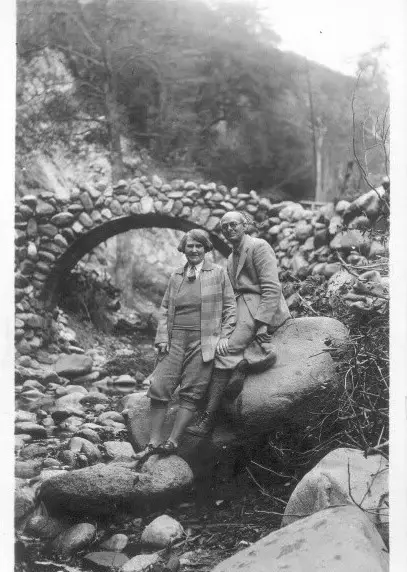
As the name implies, it was built completely out of boulders. The inside was called the Rock Room, and it contained a library, piano, and fireplace.
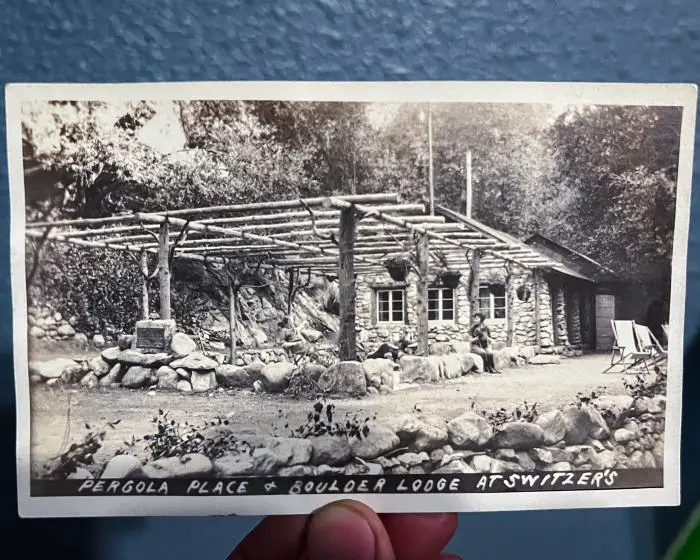
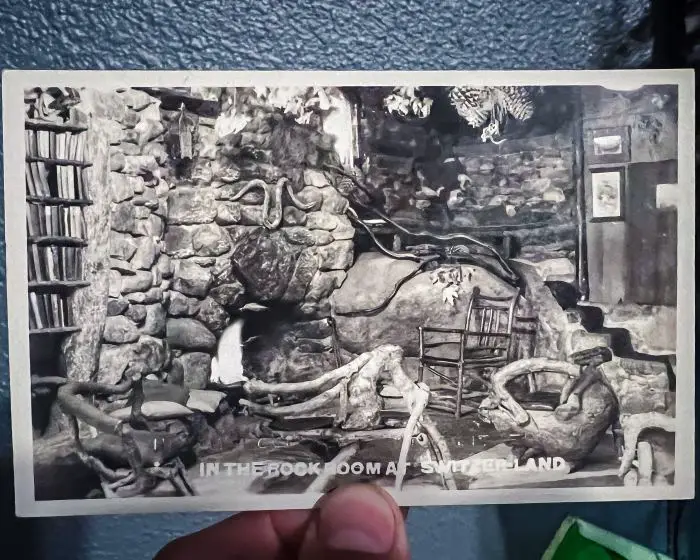
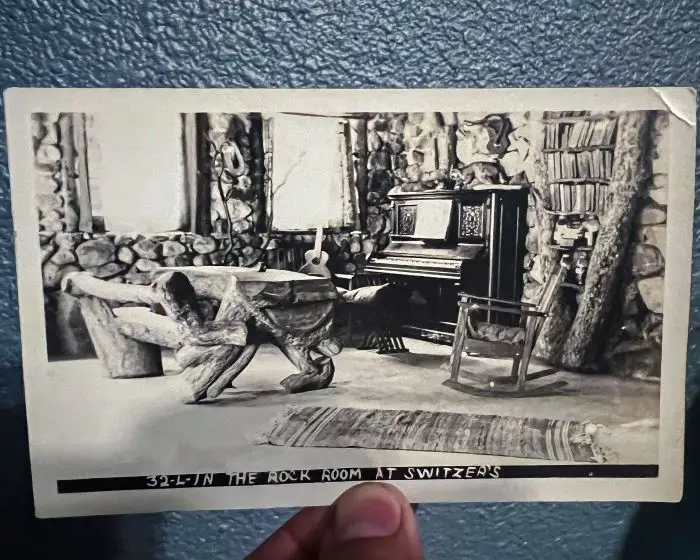
Clifford E. Clinton and Ramson M. Callicott purchased the resort from the Austins on Jan 1, 1936, but were sadly forced to close a few years later due to terminal illness.
Ken Fitzgerald kindly provided a detailed history of the camp’s last owners, Edgar and Libby Swanson, who also happened to be his grandparents. His parents, Leo and Norma Fitzgerald took over Switzers while his grandparents ran a different camp at Mt Wilson.
Due to a terrible forest fire in 1959 and public safety, Switzer Land was forced to permanently close down, ending a bygone era of square dancing, fishing, and hunting. All buildings were razed by the Forest Reserve, including the chapel.
However, the famous Switzer Falls trail lives on, with plenty of hikers filling the parking lots every weekend in order to visit the beautiful cascade.
FAQs
How Long Of A Hike Is Switzer Falls?
If you begin the hike at the Switzer Falls Picnic Area, expect a total of 3.6 miles or 4.2 miles if you include both the chapel ruins detour and the trek to the forgotten falls.
How Hard Is The Switzer Falls Trail?
The trail is moderately challenging. The ascend out of the canyon located about halfway between the parking lot and Switzer Falls is the most challenging section.
Do You Need A Pass For Switzer Falls?
The only permit or pass you need is the Adventure Pass required to park in any SoCal mountains.
Is Switzer Falls Open?
Switzer Falls is currently open.
How Long Does It Take To Hike Switzer Falls?
The average hiker can complete the Switzer Falls hike in roughly 1 hour and 45 minutes to 2 hours (not including the ruins and forgotten falls).

